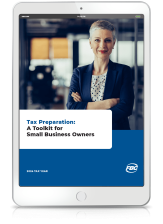Last updated: Feb. 13, 2024
You’ve been saving money for years in your registered retirement savings plan (RRSP) and now it’s time to cash in.
You could take out all the money at once if you wanted, but it’s a better idea to convert the RRSP to a registered retirement investment fund (RRIF).
The RRIF will continue to grow any investment income tax-free, but you’ll be withdrawing from the account instead of contributing to it.
You can convert your RRSP to an RRIF whenever you want.
However, the federal government requires you to convert your RRSP to an RRIF by December 31 of the year you turn 71.
You can still make a deposit to your RRSP in the year you turn 71 up to your maximum contribution room to take advantage of the tax benefit.
You also have a lifetime over-contribution limit of $2,000 that you can contribute to your RRSP.
You won’t be able to take the tax benefit for the $2,000, but if you have a high-yield investment in your portfolio, the capital appreciation, interest and/or dividends will accumulate tax-free until you collapse the account.
Be careful not to go over $2,000 since you’ll have to pay a tax of 1% per month on excess contributions, and it can really add up.
What happens if I don’t collapse my RRSP?
If you don’t transfer your RRSP to another registered plan, like an annuity or registered retirement income fund (RRIF) before then, the CRA will treat your entire RRSP savings as income in that year.
The tax hit could be substantial. So, you’ll want to search out the best way to collapse your RRSP so you can minimize your tax bill.
You can keep your new RRIF in the same financial institution you held the RRSP, with the same investments.
If you have multiple RRSPs, you can put them into one RRIF or have multiple RRIF acounts. You'll have to open a RRIF account and choose a beneficiary.
When do I start withdrawing from my RRIF?
You must start taking withdrawals the year following the year you opened your RRIF.
Like the RRSP, you won’t pay taxes on any money that stays in the account, but RRIF withdrawals are considered taxable income.
Before deciding how much to withdraw in a year, make sure to consider your other taxable retirement income, like Old Age Security (OAS), Canada Pension Plan (CPP), other employment pensions, and/or any part-time income you may still be earning. Having larger income will have tax consequences and could lead to the claw back of certain income-tested government benefits, like OAS.
Depending on your additional sources of income and your expenses, some years it will be best to withdraw more money and some years you may want to withdraw only the mandatory minimum amount.
It’s always a good idea to speak to a professional about potential tax consequences before deciding how much to withdraw from your RRIF.
There is a mandatory minimum amount you’ll have to withdraw each year based on a percentage of your account balance at the beginning of the tax year, and this percentage increases as you get older.
Register RRIF with your younger spouse to reduce your tax liability
If your spouse is younger, there’s a way to reduce your tax liability in the early years of withdrawals from a RRIF.
If you have other retirement income and can live on reduced withdrawals from your RRIF, you can contribute to a spousal RRSP during your lifetime and have your spouse withdraw income from their plan through her RRIF with the CRA based on the age of your spouse if he/she is younger.
Note: This strategy is predicated on a lifetime of contributing to a spousal RRSP plan.
For example:
- if you’re 71 and your spouse is 64, by converting the spousal RRSP to a RRIF, the RRIF withdrawals will be divided into 7 additional years and therefore lower payments.
- You reduce the annual minimum you’re required to withdraw from your RRIF thereby conserving capital and allowing the RRIF to grow.
Set up a small RRIF at 65 to take advantage of tax credits
You can use your RRSP funds to set up a small RRIF at age 65 to take advantage of an additional tax credit, called the Pension Income Amount, of up to $2,000 of qualifying pension income.
By transferring $14,000 from your RRSP to a RRIF at age 65 and then withdrawing up to $2,000 per year from 65 to 71, you can take that $14,000 tax-free if you are in the lowest tax bracket in whatever calendar year you turn 65.
If you have a higher marginal tax rate, there will be a tax cost, but not as high as it would otherwise be.
If you have a spouse that is over 65 and in a lower tax bracket than you, you can split your pension income. Subject to certain conditions, this means you could double your annual RRIF withdrawal to $4,000 per year.
Under this option, it may take many years to wind down your RRIF, but it allows you to either take that $14,000 tax free, or still pay less tax than you otherwise would.
As always, it’s recommended you speak to a tax professional to see which option is best for you.
Free Download: Small Business Tax Strategies: A Complete Owner's Manual
Many small business owners wait until spring to start thinking about their taxes, but this simple act of waiting could cost them thousands.
With Small Business Tax Strategies: A Complete Owner's Manual, you'll learn what key tax information and documents you need to meet Canada's fast-approaching tax filing deadline.
Consider this toolkit your roadmap to help you get organized, reduce your tax burden, and keep more money in your pocket.
About FBC
FBC was founded on the belief that Canadians should receive every benefit of filing their taxes. Over 70 years later, we continue to support farmers, truckers, trades, and other small businesses minimize their taxes, simplify their books, and pay their employees.
Take 15-minutes to connect with us. Let’s see if we’re a good fit for you and your business. Book online or call us at 1-800-265-1002



